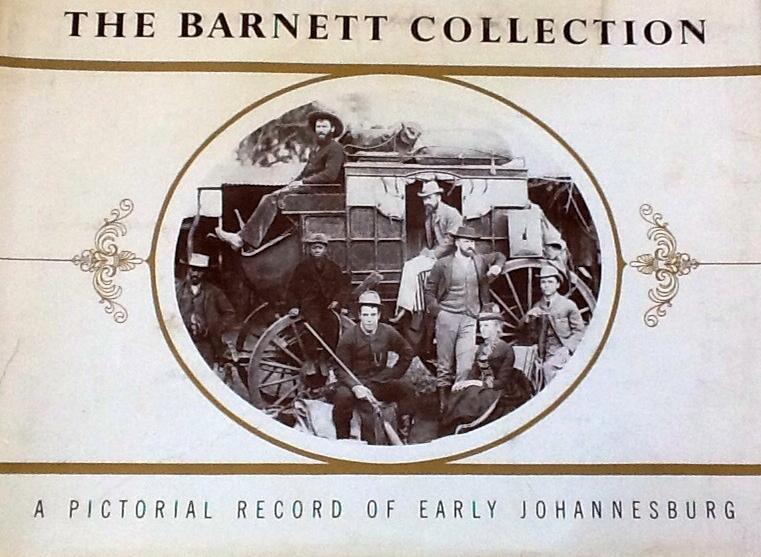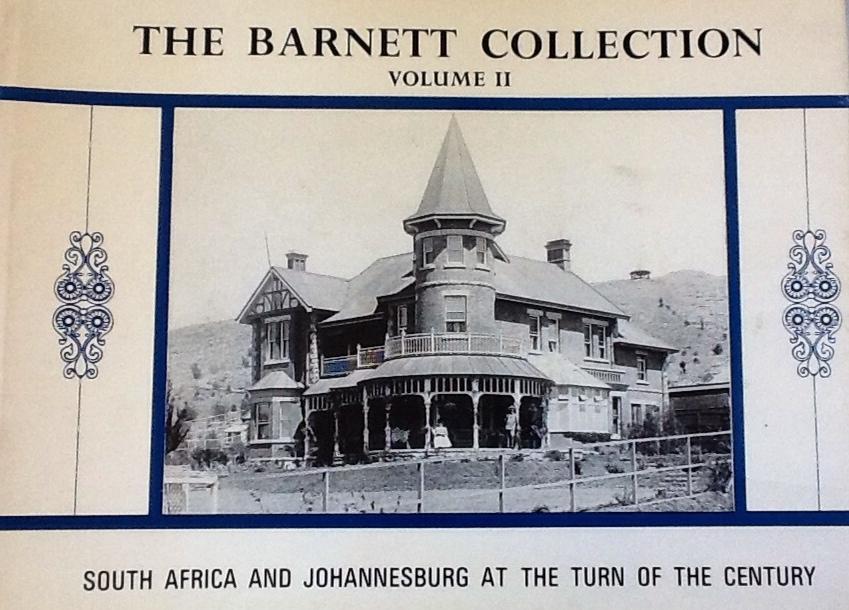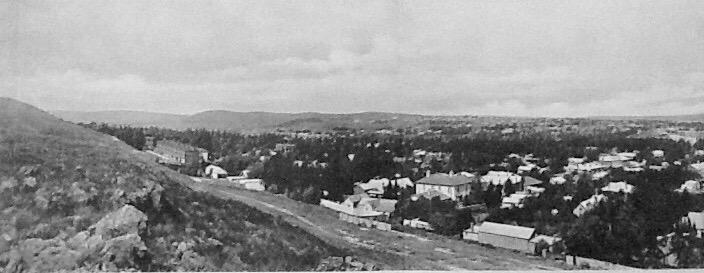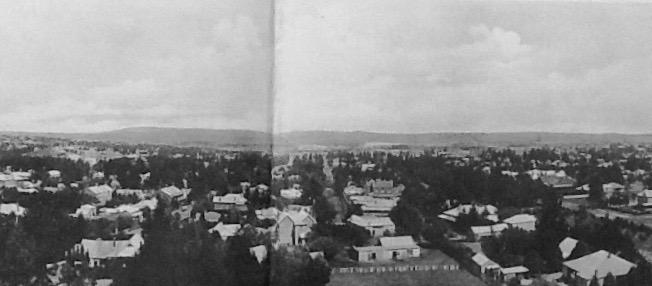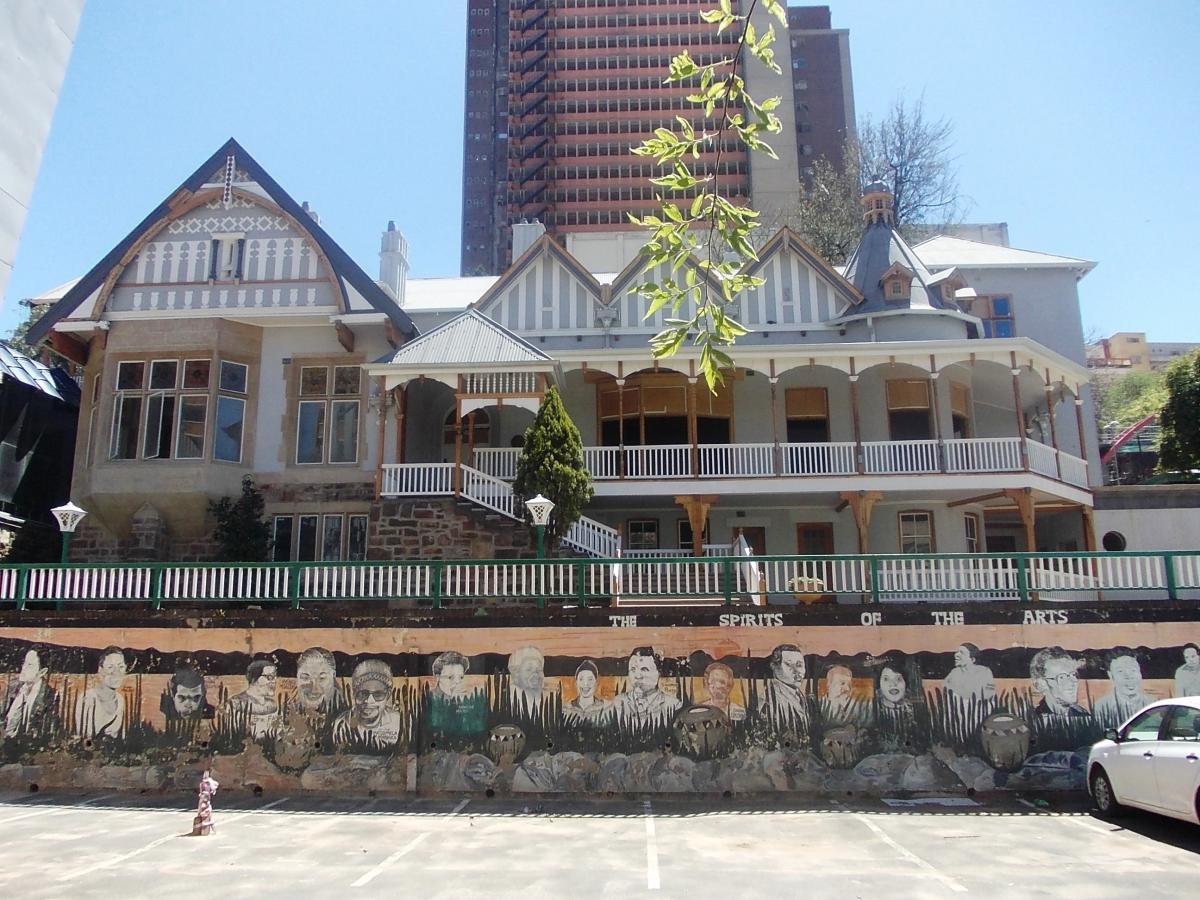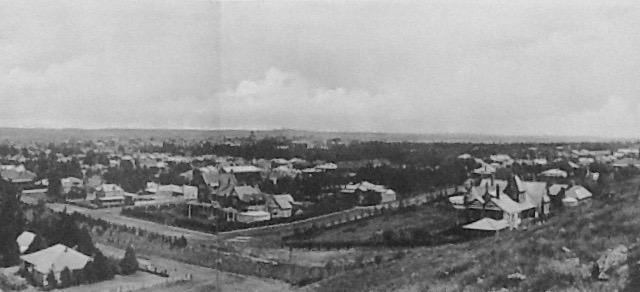
Disclaimer: Any views expressed by individuals and organisations are their own and do not in any way represent the views of The Heritage Portal. If you find any mistakes or historical inaccuracies, please contact the editor.
I recently came across the souvenir album Barnett's Views of Johannesburg and Suburbs. I photographed a panoramic view of the early town (in three sections) and thought I would share it. The book has no date but the look of the cover, very art nouveau design with floral garland, and the street scenes and buildings leads me to believe that it was published in the late 1890s or early 1900s. It is probably post 1897 but pre the introduction of Chinese labour to the Rand in 1904. This volume came up on sale on Antiquarian (book) auctions a few years ago and sold for $125.
Album Cover
Some of the images inside the album are familiar as Barnetts was the professional photography firm whose collection of glass plates came to be owned by The Star (collection now housed at Wits Historical papers, William Cullen Library). Two thousand photographs comprise The Star Barnett Collection and there were hundreds if not thousands of Barnett postcards. In 1966 The Star published two volumes of early JHB and South African photographs from the collection and those two books are now much sought after Africana books. They have a price tag of up to R500 each.
Volume I
Volume II
Joseph Barnett was Jewish of Welsh origin. He came to Johannesburg circa 1889 and established a photographic business. He was later joined by his younger brother David. Joseph died in 1897 but David continued the family photographic business. The original family name was Isaacs and the Johannesburg brothers and a sister took the name of Barnett (Entry for Joseph Barnett in the Dictionary of SA Biography vol 5 and see the introductory essay of the Barnett Collection book). The photographic firm was located in the National Mutual Buildings, corner of Market and Rissik Streets.
David Barnett remained in the photographic business until about 1920 when he sold his business. His collection of photographs was sold to The Star in the 1920s.
The interest of this panoramic view looking south and eastward from Hospital Hill lies in what it reveals about the emerging residential side of town to the East.
Left section - View east over Bez Valley towards Kensington
Central section - View to the South towards Bertrams and Lorenzville
Right section - View over Doornfontein with Windybrow at the base of Pullingers Kop
The mining camp era has given way to suburban developments. The suburbs of Bertrams, Lorenzville, Judith's Paarl and Bez Valley have been settled. It's remarkable how quickly these areas took on a settled residential appearance. The buildings are low rise, single or double storey. Many were quite modest but there were some "grander mansions" including Windybrow, the home of Theodore Reunert which is still there today, and Warrington Hall, the home of Frederick Eckstein which was sadly demolished (only the name survives in an apartment block on the same site). The trees by the date of this picture were well established, possibly oaks, pepper, eucalyptus, conifers, palms. The roads had been laid out but they were dust roads. Some stands were quite large. The town takes easily to the concept of detached and bungalow homes each in their own garden, stands demarcated by fences and hedges. The stand was large enough for stables, maybe a cow shed, outbuildings and rooms for domestic servants. The distant hills of the Witwatersrand and the near rocky ridges are still to be seen today. One can make out the start of the gold mine tailings dumps.
Windybrow is still there today (The Heritage Portal)
One can also orientate Nugget Street, Hadfield Terrace and Pietersen Street. The photographer has positioned himself on a high point (Hospital Hill) and views settlement of emerging suburbs in the valley below before the eye reaches to the next ridge and a clear sky with some clouds. In many ways these photographs look so familiar because the landscape, hills and land formations are still there. We take pleasure from these pictures because they give a hint of where and how Johannesburg originated.
These are wonderful compositions of early Johannesburg. And panoramic views were clearly popular for photographer and they now become a valuable documentary record of the look of Johannesburg at the turn of the 20th century. However the lack of a firm date adds to the slight anxiety that there is still a puzzle to be solved.
There was a formula to these types of souvenir albums. It makes some assumptions about what the visitor or traveler might wish to be reminded of when back home in England or what would represent a suitable Christmas gift book for a "back home" family. There were 33 photographs and 2 fold out panoramic views as end papers. The 33 photographs cover street scenes and buildings of Johannesburg, a couple of photographs of the impressive public buildings of Pretoria, some gold mine photos of prominent gold mines such as Simmer and Jack and then a good many ethnographic photographs of African indigenous life. Such an original souvenir album differs from the later Barnett Star 1960s publications because they were composed and published at least 60 years previously and are about what people at the time wished to view in a pictorial album.
The ethno photos have an anthropological interest as they reveal a traditional society in transition with men recruited to work on the mines, the start of the migrant labour system (there is one image of a mine compound) but with a retention of rural roots and culture revealed in early mine compound music production, the mine dance tribal tradition. I shall share some of these images in a later article.
The album offers a window on the world that was early Johannesburg but also on the making of the new colonial culture, shaped by a mining town on the veld. Here we glean how that world was constructed and understood. There is an air of newly arrived permanence to these photographs of this early mining town and of two totally different cultures meeting in the mines, workplaces and streets of the town, but also an echo or whispering of the world's left behind in Europe or England or in rural kraals.
My grateful thanks to the library of the Barloworld archives where this album was accessed.
Kathy Munro is an Honorary Associate Professor in the School of Architecture and Planning at the University of the Witwatersrand. She enjoyed a long career as an academic and in management at Wits University. She trained as an economic historian. She is an enthusiastic book person and has built her own somewhat eclectic book collection over 40 years. Her interests cover Africana, Johannesburg history, history, art history, travel, business and banking histories. She researches and writes on historical architecture and heritage matters and is well known for her magnificent book reviews. She is a member of the Board of the Johannesburg Heritage Foundation and is a docent at the Wits Arts Museum. She is currently working on a couple of projects on Johannesburg architects and is researching South African architects, war cemeteries and memorials.
Comments will load below. If for any reason none appear click here for some troubleshooting tips. If you would like to post a comment and need instructions click here.

